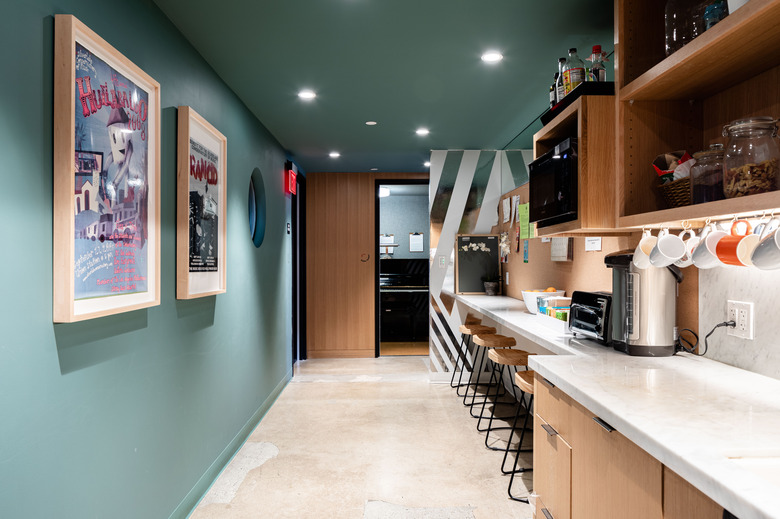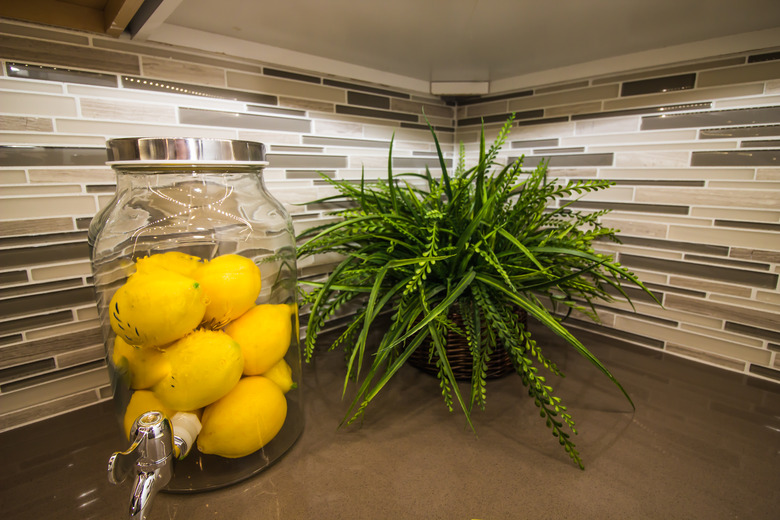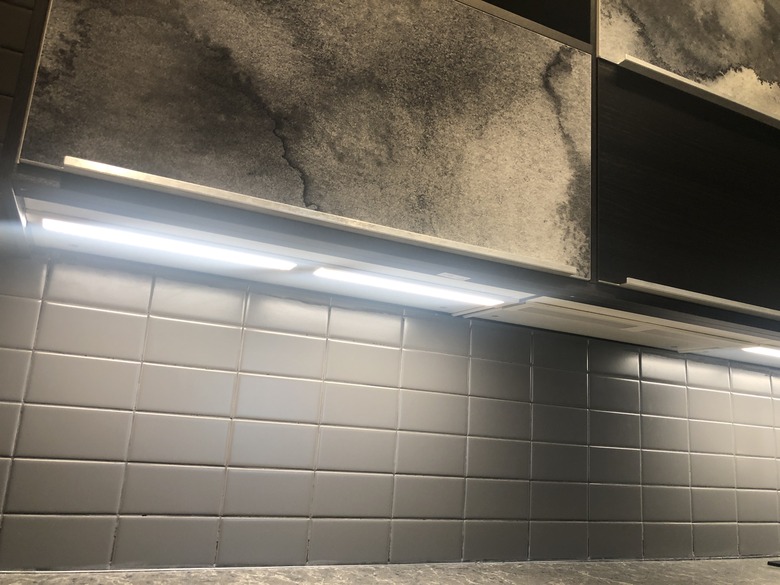Kitchen Undercabinet Lighting: What You Should Know
Undercabinet lighting is probably something you don't think about often, but you should because it is awesome. This sounds like pretty high praise for a light fixture, but it is well deserved. The right undercabinet lighting makes it much easier to perform various tasks at the kitchen counter and, when installed on a dimmer switch, can serve as accent lighting and add a little ambiance. The question isn't whether or not you want it (you do) but rather which kind is best for you.
Benefits of Undercabinet Lighting
Benefits of Undercabinet Lighting
If you have never had undercabinet lights in your kitchen before, you may be wondering what makes them so great. For one thing, they make your kitchen a safer place in which to work. When you are cutting vegetables with a sharp knife and performing other kitchen tasks, proper lighting makes it easier for you to see what you are doing, helping to reduce the likelihood of accidents.
Undercabinet lights can also save you money. Most modern lights are energy efficient, and this is especially true of LEDs. You also may find that your undercabinet lights provide enough illumination that you don't always need to turn on your overhead lights.
Adding undercabinet lights to your kitchen also means adding style. You can use warm bulbs for a soft, traditional glow or super-cool LED lights for a sleek, modern look. Many LED lights even let you change the color of the light they emit, so you could have a little decorating fun around Halloween, Valentine's Day and other holidays.
Undercabinet Puck Lights
Undercabinet Puck Lights
At 2 to 3 inches wide, puck lights truly do look like hockey pucks. When installed on the bottom of your cabinets, these fixtures emit light in a conical shape with the light beam growing wider as it approaches the counter. The shape of the light emitted by puck lights is attractive, but it can lead to uneven lighting. To avoid this issue, space your puck lights no further than 1 foot apart.
Historically, most puck lights used halogen or xenon bulbs. These shed adequate light, but they get quite hot during operation. As such, it is important to keep fruit and other heat-sensitive foods away from them. You also need to make sure that you don't store food in a cabinet with a halogen or xenon bulb beneath it.
Fortunately, puck lights are now available with LEDs. These lights use less energy and stay cool during use, so you will never pull a bag of melted chocolate chips out of your cabinet again.
Puck Light Installation
Puck Light Installation
Although they are available with self-adhesive backing strips, most puck lights come with small screws that you can use to mount them to your cabinet. Mounting the lights is easy, but powering them is a bit more difficult. Most halogen and xenon puck lights run on 120 volts AC, so you or your electrician can simply hard-wire them. Some run on 12 volts instead, and these will need a transformer.
LED lights also require a transformer because they run on 12 volts of DC, according to Waveform Lighting. When installing lights that require a transformer, you will need to either get creative about where you will hide it, or you can tuck it in the back corner of your cabinet and drill a small hole for wiring. You also have the option of running LED puck lights from a battery instead of hard-wiring them. This makes installation much easier, but you will have to change the batteries periodically.
Undercabinet Bar Lights
Undercabinet Bar Lights
If you know that a bit of unevenness in your task lighting will make you crazy, consider bar lights instead of puck lights. Sometimes referred to as strip lights, bar lights are long, solid light fixtures that cast light evenly from one end to the other. The most common form of bar light is the fluorescent light.
Some people don't like the cast of fluorescent lights, and despite manufacturer claims about longevity, the lights can start to dim much sooner than they should. A more reliable option is LED lighting. LEDs are even more energy efficient than fluorescent lights, and they have a longer life, although they can fail just like fluorescent bulbs can.
Light Bar Installation
Light Bar Installation
Like puck lights, light bars get screwed into the underside of the cabinet. These lights run on 120 volts, however, so you won't need any type of transformer. Bar fixtures come in both hard-wire and plug-in versions, and many are convertible and can be connected either way. Hard-wired fixtures can be wired to a light switch, and some have built-in on/off switches that you can elect to use rather than wiring them to a separate switch. Plug-in fixtures always have their own switches, and they simply plug into the nearest electrical outlet.
If you need multiple light bars to provide sufficient illumination of your countertops, consider purchasing fixtures that you can daisy chain. In this arrangement, you can link the lights to one another so that you only have to hard-wire or plug in one of the fixtures, and it powers all the others.
Undercabinet Rope and Tape Lights
Undercabinet Rope and Tape Lights
Bar lights provide even lighting, but they are not flexible enough to go around corners. For that, you will need rope lighting or LED tape light strips. Available in lengths of 25 feet and more, rope lights are basically a line of LED lights that are enclosed within a flexible plastic tube. LED strips are thin, flexible strips containing small LED lights. They have a self-adhesive backing, so you can install them almost anywhere.
If you have granite or another highly polished countertop surface, bear in mind that your countertop may reflect each individual LED light in your light fixture. To avoid this, choose a light rope that utilizes translucent plastic rather than crystal-clear tubing or a strip that diffuses the light.
When shopping for undercabinet lights, you will likely notice that LED lights and light ropes cost a bit more than some of the other lighting options. LEDs are well worth the cost, however. According to YLighting, LEDs can burn for up to 50,000 hours (although 25,000 hours is more realistic). Incandescent bulbs, in contrast, last for only about 1,000 hours.
Rope Light Installation
Rope Light Installation
Like other undercabinet lighting fixtures, rope lights need to be wired to a power supply and then held in place beneath your cabinets. To hang your rope lights, you will screw plastic clips in place under the cabinets and then pop the LED rope into them. Adhesive LED strips, however, are mounted using a simple peel-and-stick method.
Because LED strips and ropes are long, you may need to cut them shorter during installation. Before you do, carefully examine them. There are specific places marked to indicate where it is safe to cut through the rope or tape with a pair of scissors or a utility knife. If you cut the strip or rope in the wrong place, your lights may not work.
Hard-Wiring Tips and Tricks
Hard-Wiring Tips and Tricks
In the modern age, many undercabinet lighting fixtures can be battery powered if you like. This makes installing the fixtures much easier, but you will be changing batteries often if you use your lights frequently. Most homeowners find that hard-wiring their fixtures is the way to go.
When doing so, consider installing a dimmer switch. When turned up high, undercabinet lighting makes excellent task lighting to help you see what you are doing. The ability to dim the lights, however, can add a cozy and intimate feel to your kitchen and can allow your undercabinet lighting to serve as accent lighting as well as task lighting.
In addition to adding a dimmer switch, lighting pros will tell you to think carefully about your light switch placement. Undercabinet lighting is largely used as task lighting, so it makes sense to keep the light switch close to your work area.
Light Color and the Color-Rendering Index
Light Color and the Color-Rendering Index
When you are working in the kitchen, there are two light measurements of which you should be aware. One is the measurement of a light's temperature. Measured in kelvins (K), light temperature refers to how yellow or blue a light is. The lower the K value, the more yellow the light.
When undercabinet lighting is used to help you work in the kitchen, the ideal temperature is about 4,000 K. A rating of 4,000 K is as close to neutral as you can get, offering a pure, white light that is neither yellow nor blue. The light's position on the color-rendering index (CRI) also matters. The CRI measures how closely objects examined under an indoor light match the color they appear when viewed outdoors in natural light.
Ideally, your light fixtures will be rated at 90 or higher on this 100-point scale. A light with a high CRI helps you see color as accurately as possible, making it easier to tell if a tomato is really ripe or if there is a tiny brown spot of rot on the edge of a pepper.
Discreet But Not Invisible
Discreet But Not Invisible
Undercabinet lighting is largely utilitarian. It is meant to serve a specific purpose, and it certainly will not be the crown jewel of your kitchen remodel. However, that doesn't mean that no one will see your lights. You will likely have people of many different heights in your kitchen, and guests may get down into a seated position around your kitchen table.
Depending on the angle, you and your guests may occasionally catch a glimpse of your undercabinet light fixtures. They don't have to be beautiful, but they should match your kitchen so they don't jump out at guests who do happen to see them. You need not go fancy but don't install a light that you hate because you think you will never have to look at it again.


